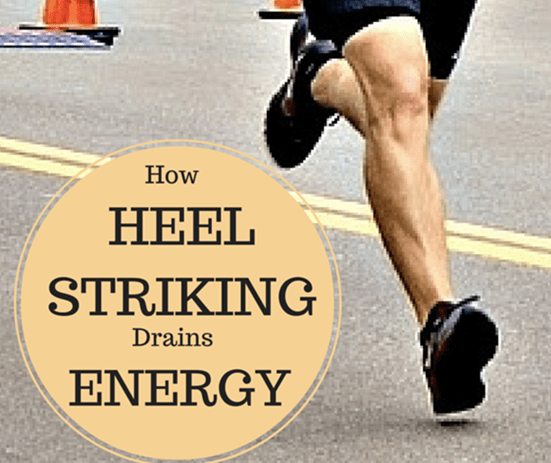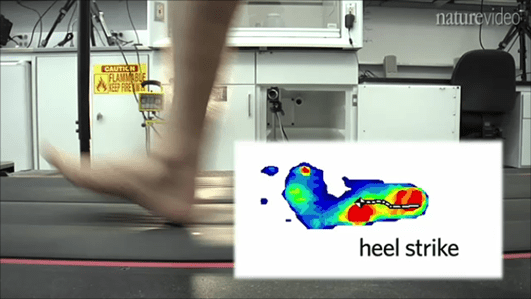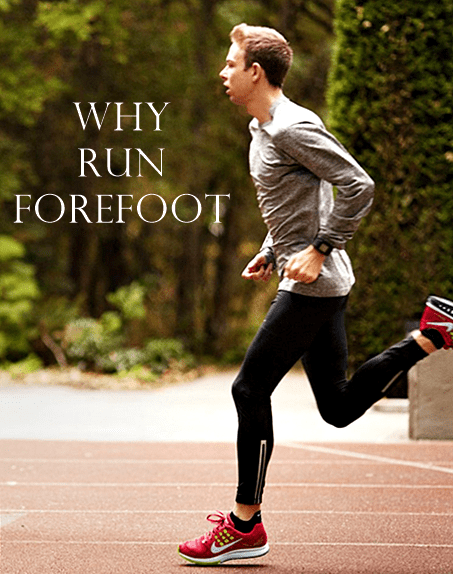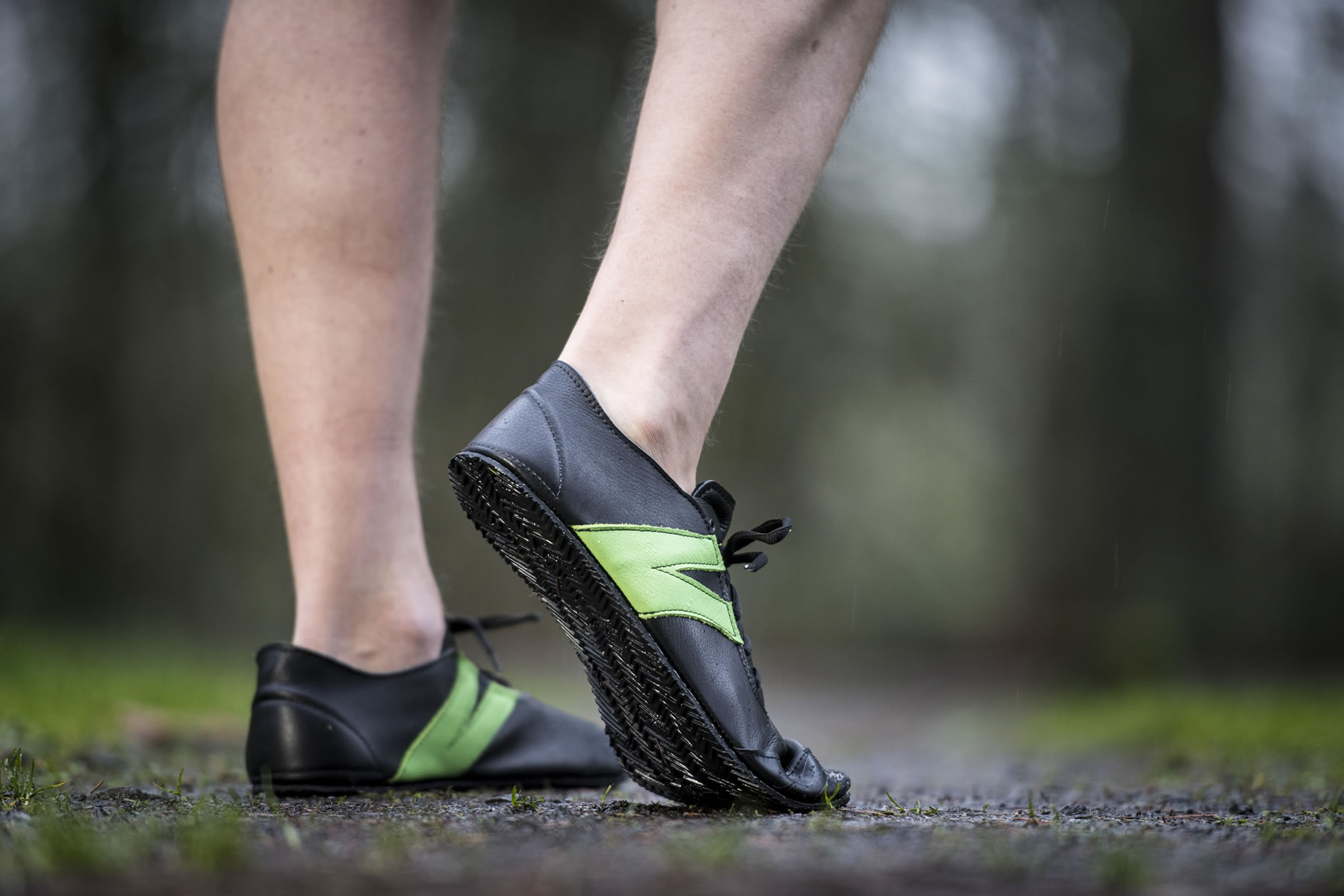If you remain unconvinced that heel strike running is the most injurious and slowest form of running than forefoot running, there’s strong evidence showing heel strike running profoundly alters the elasticity effectiveness of the Achilles tendon, while damaging it. When the Achilles tendon is unused in running, like in heel strike running, then your muscles must work harder to thrust the body forward at each step, whereas forefoot running engages the mechanics that perfectly matches the function of the elastic structures of the lower leg, especially, the Achilles.

One study published in the journal, Medicine and Science in Sports and Exercise, discovered that heel striking when running mechanically reduces elastic effectiveness of the Achilles tendon, resulting in greater muscular effort and energy expenditure.
- At heel strike, the foot strikes the ground in front of the knee, while the knee is unbent which causes less energy to be absorbed by the tendons as a consequence.
- Increasing running speed while heel striking increases compressive forces on the Achilles tendon, further impairing elasticity effectiveness.
- Heel strike running increases ground-contact time which also reduces stretch-potential of elastic tissues.
Because heel striking when running does not compliment or encourage elasticity effectiveness of the Achilles, proves that the Achilles is not well-adapted for heel strike running, however forefoot running is proven to produce more thrust with less muscular energy simply by making the Achilles an effectual spring that contributes more elastic strain energy efficiently.
Because there’s minimal braking and greater forward momentum, forefoot running is traditionally construed as the best foot strike for sprinters, but for these reasons, forefoot striking is the preferred strike pattern used by the top long distance runners in the world!
At this point, researchers examining the functional and performance advantages of forefoot running have gathered enough evidence to conclude that the energy-saving properties of the Achilles responds best when a forefoot strike is employed. Here’s how…

Landing with a forefoot strike when running greatly improves the natural abilities of the Achilles to act as a powerful energy-saving spring by encouraging more stretch-potential in the tendon. This happens at landing, where the foot lands under the ankle and knee, and closer to your center of mass (i.e. your hips). In this way, the Achilles slackens, then it elongates when the heel drops to the ground after the balls of the foot made initial contact. Most notably, the same study concluded:
- because the foot lands under the knee as the knee is slightly flexed, forefoot strike running reduces ground-contact time, which increases stretch-potential in the elastic tissues, thereby enhancing elasticity effectiveness, especially at faster speeds. This is of paramount importance because elastic effectiveness of the Achilles tendon accounts for 35% of the mechanical energy needed in running.
The Take Home Message
This data validates that foot strike pattern matters immensely in running because forefoot running is most directly responsible for leading to functional improvements of the Achilles by enhancing spring loading in the tendon, and that those increases in spring energy in turn enhances running economy.
Another important factor, forefoot running actively encourages greater engagement of the ankle to stabilize the foot and prevent over-pronation (extreme movements of the heel during stance), and provides stronger stability to the Achilles, while loading more elastic energy through the tendon. Read more here about why forefoot running is better for the Achilles than heel strike running.

References:
Hunter et al., 2011. Tendon length and joint flexibility are related to running economy. Med Sci Sports Exerc. 43(8); 1492-9.
Run forefoot, because you are faster than you think!
Bretta Riches
BSc Neurobiology; MSc Biomechanics candidate, ultra minimalist runner & founder of RunForefoot. I was a heel striker, always injured. I was inspired by the great Tirunesh Dibaba to try forefoot running. Now, I'm injury free. This is why I launched Run Forefoot, to advocate the health & performance benefits of forefoot running and to raise awareness on the dangers of heel striking, because the world needs to know.
Latest posts by Bretta Riches (see all)
- Cushioned Running Shoes Found to Be Bad for Ankles - 23/04/2024
- Forefoot Running and Achilles Pain - 19/04/2024
- Does Foot Strike Really Matter in Running? YES! - 17/04/2024



